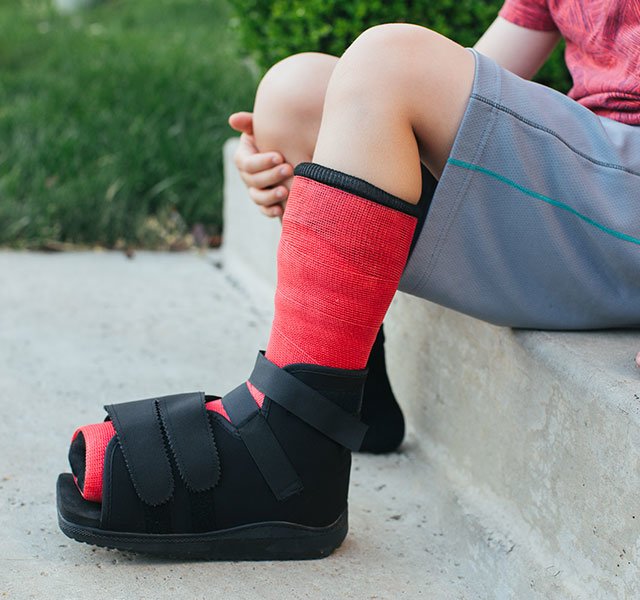It’s not breaking news that kids break bones. Whether from falling or kidding around, 40 to 50 percent of children experience a fracture of some kind.
Although broken and fractured arms, ankles, legs (and more) are common, parents often have questions — and concerns. William Hakeos, M.D., an orthopedic surgeon with the Henry Ford Health, addresses the worries he most frequently hears.
Breaking Down Childhood Fractures
Insights and answers to common concerns, myths and uncertainties:
Concern #1: A fracture signals an underlying issue
A fracture, which can be a complete break or a hairline crack, is typically a symptom of kids being kids. “Kids run, skip, jump — and fall,” says Dr. Hakeos. “For the vast majority of children, a fracture is due to an accident, not a medical condition.” However, always seek medical advice from a trusted professional if you have concerns about your child’s health.
Concern #2: A childhood fracture can lead to long-term problems
Kids are resilient, right down to their bones. “A fracture can be a frightening experience,” says Dr. Hakeos. “But the overwhelming majority of kids will heal with no lasting problems.”
Concern #3: My child will need surgery
Cast off worries about surgical treatment. According to Dr. Hakeos, most kids will need a cast rather than an operation. There are exceptions, of course, including fractures around the growth plate or joint. Evaluation and care by an orthopedic surgeon is crucial for getting the right diagnosis and treatment.
Concern #4: Keeping a cast dry will be a hassle, if not impossible
Worries about water may be all wet. “Today’s waterproof casts are a great option,” says Dr. Hakeos. These modern wonders help parents avoid bath-time battles and struggles with products that claim to keep casts dry — but don’t.
Concern #5: I won’t know the difference between a boo-boo and a break
Kids are great at pretending, but not when it comes to faking an injury. Dr. Hakeos says if your child won’t put weight on or use an extremity a few hours after an injury, it’s time to come in. “Parents may worry about wasting a doctor’s time,” Dr. Hakeos remarks. “Getting the right care right away will help a child now and head off problems in the future. If you’re concerned, we want to see your child.”
Concern #6: Follow-up visits waste time and money
Orthopedics aren’t a one-and-done proposition. Follow-up appointments help determine whether the bone is healing properly. This is especially important in children’s growing bones.
“Injuries to the growth plate can cause long-term problems with your child’s growth in some circumstances, says Dr. Hakeos. “Follow-up X-rays two to three months after the injury help determine whether the growth plate has sustained critical or long-term damage.” This information is crucial to heading off future complications.
Concern #7: Sports will be benched
Kids love to play, and that often includes sports and other activities. An honest discussion with your orthopedic surgeon will help you understand what your child can and cannot do — and when. “Your child will likely be able to return to previous activities,” says Dr. Hakeos. “The timeline, need for rehabilitation and limitations all need to be evaluated on a case-by-case basis, though.”
Treating fractures in children isn’t child’s play. It requires the care of an orthopedic surgeon with specialized skill and experience.
To find an orthopedic surgeon at Henry Ford, visit henryford.com or call 1-800-HENRYFORD (436-7936).
Dr. William Hakeos is an orthopedic surgeon who sees patients at Henry Ford Hospital in Detroit.



